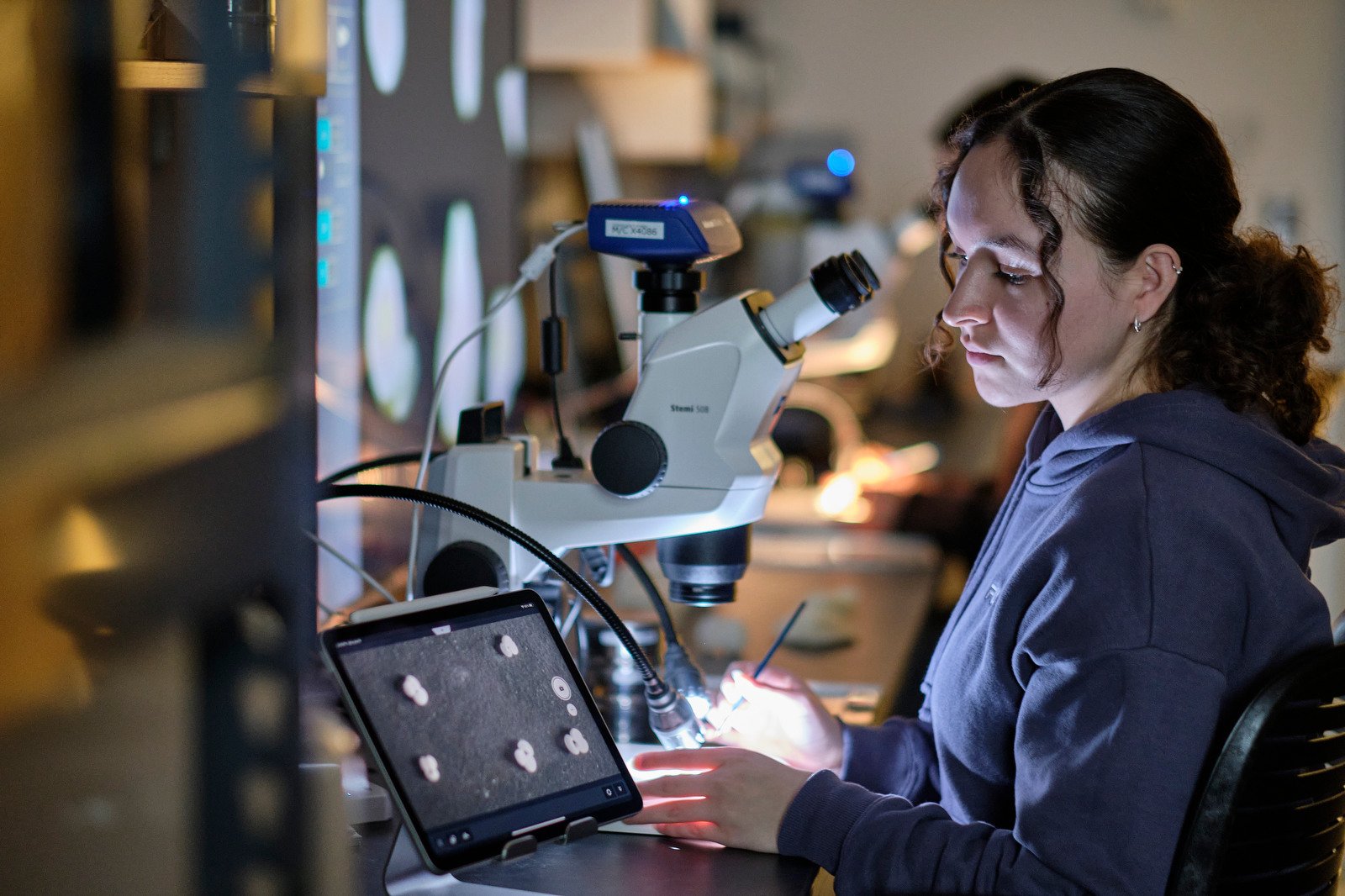Hi! My name is Ashley Rodriguez, I’m originally from East Los Angeles, California and I’ve just finished my sophomore year at Middlebury College. I came to Middlebury with the clear goal of studying biodiversity and the recovery of keystone species. I’m still passionate about these research questions but my role aboard the Celtic Explorer is quite different, shaped by my work with Allison and the questions her lab addresses.
I started working for in the FOR@M (Facility for Oceanographic Research @ Middlebury) with Allison as a research assistant in January of 2023. It was there that I was introduced to the world of paleoceanography. What first seemed like little slices of mud quickly turned into exciting discoveries about the rich history of the Pacific Ocean which can help provide insights into Earth’s future climate.
In the lab, I was tasked with processing a sediment core from the tropical Pacific Ocean, quantifying the % coarse fraction (the fraction of the sediment larger than 63 microns), identifying and picking out hundreds of individual G. ruber (Figure 1), an abundant subtropical foraminifera species, from various core depths. The samples I selected were then sent to Woods Hole Oceanographic Institution where they were analyzed for δ 18 O and 14 C, two geochemical indicators that can help us determine the age of the samples, as well as what environmental conditions were like hundreds of thousands of years ago.
At the end of the semester, Allison proposed an amazing opportunity to continue our paleoceanographic work aboard the Celtic Explorer in the Nordic Seas. We’re here on an expedition to assess the rapidly warming Arctic and the changes it is bringing to the surface waters, the biodiversity, and the sediments below. We’ll use records of past change to better understand modern warming and what the future might hold.
Written by Ashley Rodriguez
Middlebury undergraduate student Ashley Rodriguez at work using a stereomicroscope in the FOR@M
Individual G. ruber specimen photographed on a Scanning Electron Microscope (SEM) by Middlebury College student Shane Lusk.

